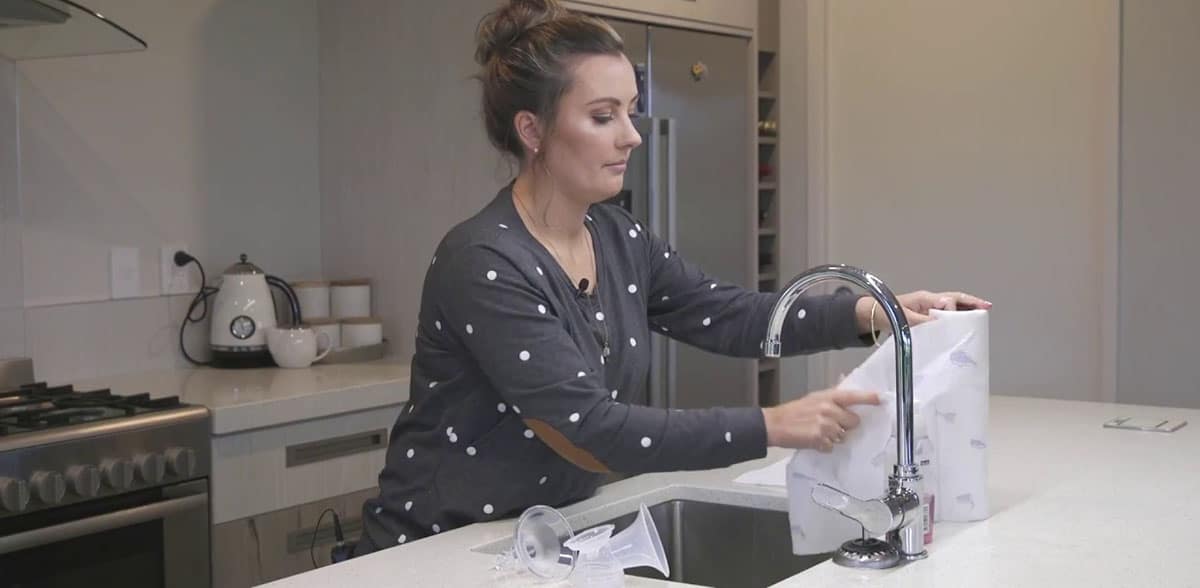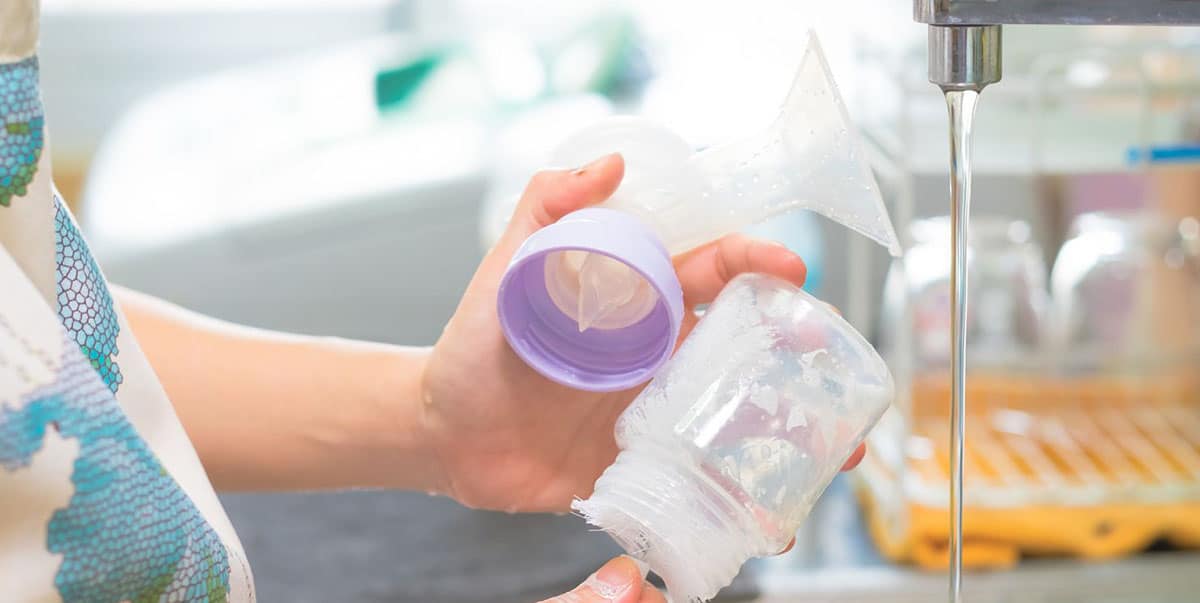
When motherhood knocks on your door, your spaces change forever and your home is filled with hitherto unknown concepts and tools. In a short time you have to get hold of concepts such as meconium, lactation, percentile, or breast pumps, for example. All these words are related to baby care and therefore, it is important that you do to them as soon as possible.
If your intention is to breastfeed but you work or you know that you will have to move with your child outside the home, there is an element that will be essential for you: the breast pump. This object It is a very useful device in the breastfeeding period, since it allows the mother to express her milk between feedings and keep it for other occasions. let's see today how to sterilize a breast pump
Tips for sterilizing a breast pump

We can say, plain and simple, breast pump, but in reality it is a breast pump or breast pump, manual or electric device that extracts breast milk and allows it to be stored.
When the mother wants to have breast milk for the child because she will not be available, for example, she must leave the baby with someone, she can express milk and store it for a certain period of time. The use of this device also stimulates lactation in those women who do not have as much milk or in those who have a lot and may suffer some moment of inflammation in the breasts.
Breast milk expressed using this procedure can be stored for up to six hours at around 20ºC, but refrigerated it can last for a few days. They say up to eight, but I don't know any mother who gives milk to her baby for so long. In reality, mothers do not usually freeze milk, the breast pump is more for those moments in daily life where you know that you will not be available.

In this way, other people can feed the baby through the bottle but without giving up the benefits of breastfeeding. This way you can also rest better and when you have to go back to work, you can continue breastfeeding until you decide.
But the breast pump, like all tools that come into contact with baby's food, must be properly cleaned and sterilized. Otherwise, the bacteria could reach your baby and seriously affect her health, so here are some ways on how to sterilize a breast pump
Tips for sterilizing a breast pump

To use the breast pump without running any risk, you just have to take some precautions while you are using it, as well as in its subsequent cleaning and sterilization, before storing it. We explain, step by step, how you have to cleaning your breast pump so that it is completely sterilized.
We can consider three great moments, the first is before using the breast pump: First, whenever you are going to manipulate the breast pump, do it with the clean hands. You can wash your hands with soap and water for 20 seconds to make sure they are really clean. Then you are ready to assemble the breast pump and check its parts: Is there moisture? Are there any traces of milk? If this is the case, the parts must be cleaned or replaced. Also, if you share the breast pump then absolutely everything must be cleaned with a disinfectant wipe.
Second after using the breast pumpyes the first thing is store expressed milk safely. You can transfer it to a sterilized bottle with a lid, put the date and time on it and immediately place it in the refrigerator, freezer or ice cream cone. cold packs if you are going to travel. then you must clean the extractor well with the special wipes and finally, inspect everything, separate the parts and wash them all under the tap so that there are no milk residues.

They can use the sink but with a bowl inside, not in direct contact with the sink itself, use hot water and neutral soap and a special sponge, which you only use with the breast pump, will help you clean all its parts. After rinse everything and leave air dry on a paper towel or clean rag in a place free of dust or dirt.
the use of a dishwasher It is only recommended when the manufacturer of the breast pump authorizes or recommends it. And as a bonus, if you are a fan of extreme cleanliness, you can always use a sanitizer at least once a day on the breast pump. This is especially recommended if the baby is less than two months old or was born prematurely or has a weakened immune system for any reason. If the baby is older or healthy, sanitization is no longer necessary.
And how do you sanitize, if necessary? The process has the following steps: cleaning, sanitizing, steam cleaning using the microwave or boiling the parts of the appliance for about five minutes and drying. To finish, basically it is a question of fulfilling the following steps when it comes to sterilize a breast pump:
- Disassemble the appliance after each use. In the instructions included with the device, you will have explained how you should disassemble it and which are the parts that can get wet.
- Use a very large casserole to have enough space, you can serve the pressure cooker. Fill the pot with tap water and put it on the fire until it starts to boil.
- Wash each piece separately. While the water is heating, you should wash each piece separately with hot water and detergent. You can use the dishwasher, the hot water will help remove any residue and bacteria.
- Put the pieces in the boiling water. All the parts that you have previously washed and that can get wet, it is usually the entire device except for the part where the battery is.
- Prepare a clean towel or rag. When the pieces have been boiling for about 10 minutes, remove them from the water with tweezers and place them on the clean cloth. Let them air dry completely, without using any paper or tissue.
- Clean with alcohol those parts that are not submersible. Including the rubber or plastic tubes through which the milk circulates, this way you will avoid the proliferation of fungi and mold.
Once ready, you just have to reassemble your breast pump and it will be ready to use when you need it.